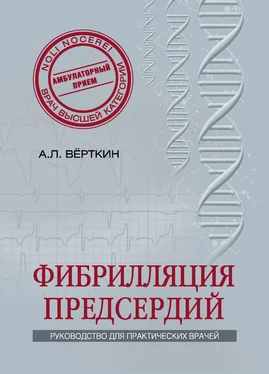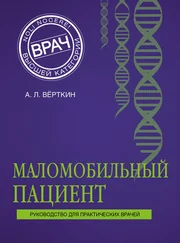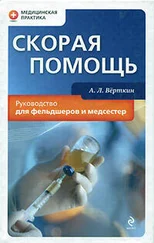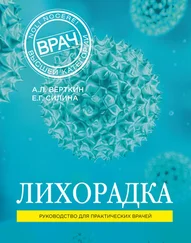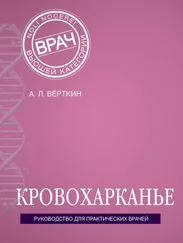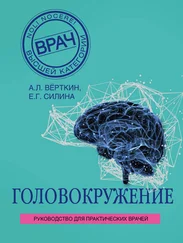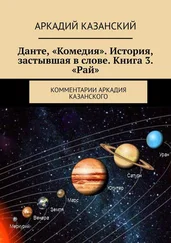10. Watson T., Shantsila E., Lip G.Y. Mechanisms of thrombogenesis in atrial fibrillation: Virchow’s triad revisited // Lancet. 2009. Vol. 373. P. 155–166.
11. Atrial Fibrillation Investigators. Risk factors for stroke and efficacy of antithrombotic therapy in atrial fibrillation. Analysis of pooled data from five randomized controlled trials // Arch Intern Med. 1994. Vol. 154 (13). P. 1449–1457.
12. Hart R.G., Pearce L.A., McBride R. et al. Factors associated with ischemic stroke during aspirin therapy in atrial fibrillation: analysis of 2012 participants in the SPAF I–III clinical trials. The Stroke Prevention in Atrial Fibrillation (SPAF) Investigators // Stroke. 1999. Vol. 30 (6). P. 1223–1229.
13. Lip G.Y., Nieuwlaat R., Pisters R. et al. Refining clinical risk stratification for predicting stroke and thromboembolism in atrial fibrillation using a novel risk factor-based approach: the euro heart survey on atrial fibrillation // Chest. 2010. Vol. 137 (2). P. 263–272.
14. Pisters R., Lane DA, Nieuwlaat R. et al. A novel user-friendly score (HAS-BLED) to assess 1-year risk of major bleeding in patients with atrial fibrillation: the Euro Heart Survey // Chest. 2010. Vol. 138 (5). P. 1093–1100.
15. Crijns H.J. Rate versus rhythm control in patients with atrial fibrillation: what the trials really say // Drugs. 2005. Vol. 65 (12). P. 1651–1667.
16. Hart R.G., Halperin J.L. Atrial fibrillation and stroke: Concepts and controversies // Stroke. 2001. Vol. 32. P. 803–808.
17. Connolly S., Pogue J., Hart R. et al. Clopidogrel plus aspirin versus oral anticoagulation for atrial fibrillation in the Atrial fibrillation Clopidogrel Trial with Irbesartan for prevention of Vascular Events (ACTIVE W): a randomised controlled trial // Lancet. 2006. Vol. 367 (9526). P. 1903–1912.
18. Goldstein L.B., Akin D.R., Samsa G.P. et al. US national survey of physician practices for the secondary and tertiary prevention of ischemic stroke. Design, service availability, and common practices // Stroke. 1995. Vol. 26 (9). P. 1607–1615.
19. Fang M.C., Go A.S., Chang Y., Borowsky L.H. et al. Warfarin discontinuation after starting warfarin for atrial fibrillation // Circ Cardiovasc Qual Outcomes. 2010. Vol. 3 (6). P. 624–631.
20. Patel M.R., Mahaffey K.W., Garg J. et al. Rivaroxaban versus warfarin in nonvalvular atrial fibrillation // N. Engl. J. Med. 2011 Vol. 365(10). P. 883–891.
21. Angeli F., Reboldi G., Garofoli M. et al. Atrial fibrillation and mortality in patients with acute myocardial infarction: a systematic overview and meta-analysis // Curr. Cardiol. Rep. 2012. Vol. 14 (5). P. 601–610.
22. Mak K.-H. Coronary and mortality risk of novel oral antithrombotic agents: a meta-analysis of large randomised trials // BMJ Open. 2012. Vol. 2. e001592.
23. Haissaguerre M., Jais P., Shah D.C. et al. Spontaneous initiation of atrial fibrillation by ectopic beats originating in the pulmonary veins // N. Engl. J. Med. 1998. Vol. 339. P. 659–666.
24. Fox C.S., Parise H., D’Agostino R.B.Sr. et al. Parental atrial fibrillation as a risk factor for atrial fibrillation in offspring // JAMA. 2004. Vol. 291. P. 2851–2855.
25. Friberg L., Hammar N., Rosenqvist M. Stroke in paroxysmal atrial fibrillation: report from the Stockholm Cohort of Atrial Fibrillation // Eur. Heart J. 2010. Vol. 31. P. 967–975.
26. Thrall G., Lane D., Carroll D., Lip G.Y. Quality of life in patients with atrial fibrilla-tion: a systematic review // Am. J. Med. 2006. Vol. 119 (448). e1–e19.
27. Nieuwlaat R., Capucci A., Camm A.J. et al. Atrial fibrillation management: a prospective survey in ESC member countries: the Euro Heart Survey on Atrial Fibrillation // Eur. Heart J. 2005. Vol. 26. P. 2422–2434.
28. Fuster V. et al. ACC/AHA/ESC guidelines for the management of patients with atrial brillation // J. Am. Coll. Cardiol. 2001. Vol. 38. P. 1231–1266.
29. Nieuwlaat R. et al. The Euro Heart Survey on Atrial Fibrillation // Am. Heart J. 2007. Vol. 153. P. 1006–1012.
30. Сулимов В.А. Российское кардиологическое общество, Национальные рекомендации по диагностике и лечению фибрилляции предсердий, 2012
31. Bodin L., Horellou M.H., Flaujac C. et al. A vitamin K epoxide reductase complex subunit–1 (VKORC1) mutation in a patient with vitamin K antagonist resistance // J. Thromb. Haemost. –2005. – Vol. 3. – P.1533–1535.
32. Tabrizi A.R., Zehnbauer B.A., Borecki I.B. et al. The frequency and effects of cytochrome P450 (CYP) 2C9 polymorphisms in patients receiving warfarin // J. Am. Coll. Surg. – 2002. – Vol. 194. – P. 267–273.
33. N. Engl. J. Med. 2012; 366:9–19. Copyright © 2011 Massachusetts Medical Society.
34. Christopher B. Granger, John H. Alexander, John J.V. McMurray et al. Apixaban versus Warfarin in Patients with Atrial Fibrillation// N. Engl. J. Med
35. Connolly S.J. The Long-Term Multicenter Observational Study of Dabigatran Treatment in Patients With Atrial Fibrillation (RELY-ABLE) Study. Circulation. 2013 Jul 16; 128 (3): 237–43.
36. Go A.S., Hylek E.M., Chang Y, Phillips K.A., Henault LE, Capra A.M., Jensvold NG, Selby JV, Singer DE. Anticoagulation therapy for stroke prevention in atrial fibrillation: how well do randomized trials translate into clinical practice? JAMA 2003; 290:2685–2692.
37. Nabauer M., Gerth A., Limbourg T., Schneider S., Oeff M., Kirchhof P., Goette A., Lewalter T., Ravens U., Meinertz T., Breithardt G., Steinbeck G. The Registry of the German Competence NETwork on Atrial Fibrillation: patient characteristics and initial management. // Europace. 2009 Apr;11(4):423–34/
38. Heeringa J., van der Kuip D.A., Hofman A., Kors J.A., van Herpen G., Stricker B.H., Stijnen T., Lip G.Y., Witteman J.C. Prevalence, incidence and lifetime risk of atrial fibrillation: the Rotterdam study. Eur Heart J 2006; 27:949–953.
39. Lin H.-J. et al. 2006, Stroke.
40. Reisinger J., Gatterer E., Lang W., Vanicek T., Eisserer G., Bachleitner T., Niemeth C., Aicher F., Grander W., Heinze G., Kuhn P., Siostrzonek P. Flecainide versus ibutilide for immediate cardioversion of atrial fibrillation of recent onset. Eur Heart J.
41. Khan I.A. Single oral loading dose of propafenone for pharmacological cardioversion of recent-onset atrial fibrillation. J. Am Coll Cardiol 2001; 37:542–547.
42. Martinez-Marcos F.J., Garcia-Garmendia J.L., Ortega-Carpio A., Fernandez-Gomez J.M., Santos J.M., Camacho C. Comparison of intravenous flecainide, propafenone, and amiodarone for conversion of acute atrial fibrillation to sinus rhythm. Am J Cardiol 2000; 86:950–953.
43. Chevalier P., Durand-Dubief A., Burri H., Cucherat M, Kirkorian G., Touboul P. Amiodarone versus placebo and class Ic drugs for cardioversion of recent-onset atrial fibrillation: a meta-analysis. J Am Coll Cardiol 2003;41: 255–262.
44. Vardas P.E., Kochiadakis G.E., Igoumenidis N.E., Tsatsakis A.M., Simantirakis E.N., Chlouverakis G.I. Amiodarone as a first-choice drug for restoring sinus rhythm in patients with atrial fibrillation: a randomized, controlled study. Chest 2000; 117:1538–1545.
45. Hart RG, Pearce LA, Aguilar MI. Meta-analysis: antithrombotic therapy to prevent stroke in patients who have nonvalvular atrial fibrillation. Ann Intern Med 2007;146:857–867.
46. Watson T., Shantsila E., Lip G.Y., 2009.
47. Vivek Y. Reddy, David Holmes et al. Safety of Percutaneous Left Atrial Appendage Closure. Circulation, 2011.
48. Hijazi Z Eur Heart 2013; 34:1475–1480.
49. Cosedis Nielsen J., Johannessen A., Raatikainen P., Hindricks G., Walfridsson H., Kongstad O. et al. A randomized comparison of radiofrequency ablation and antiarrhythmia drug therapy as first line treatment in paroxysmal atrial fibrillation. N Engl J Med 2012:in press.
Читать дальше
Конец ознакомительного отрывка
Купить книгу
